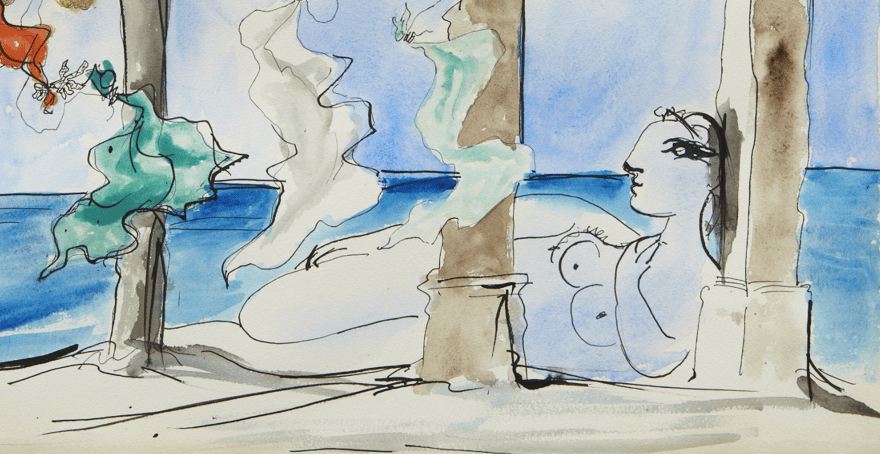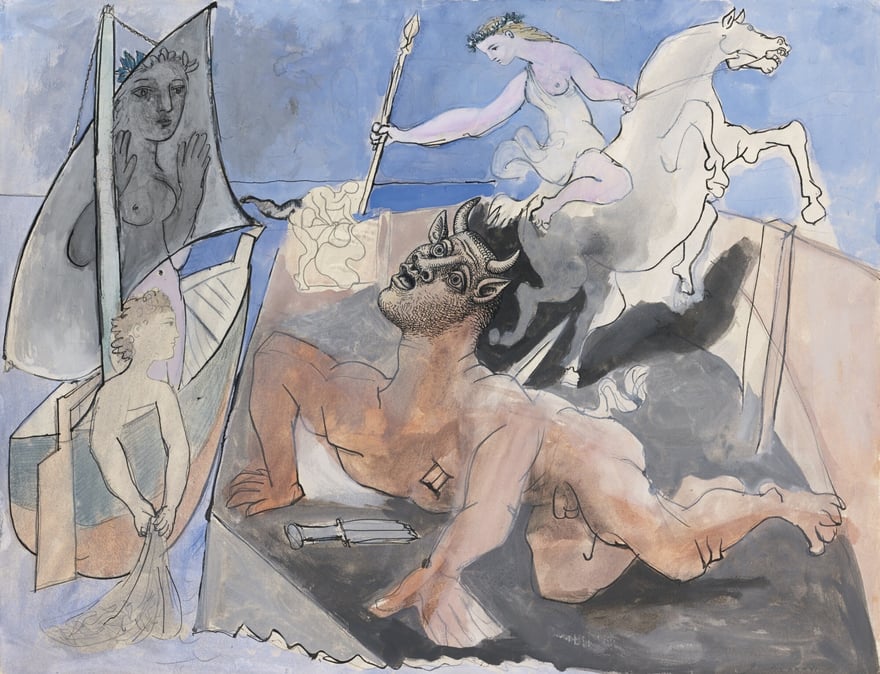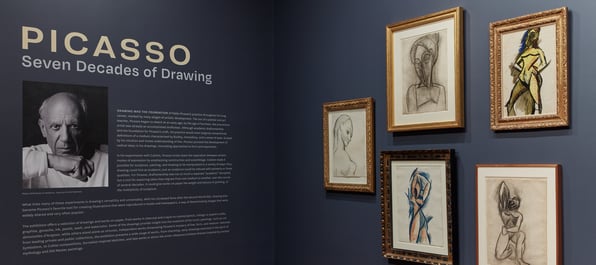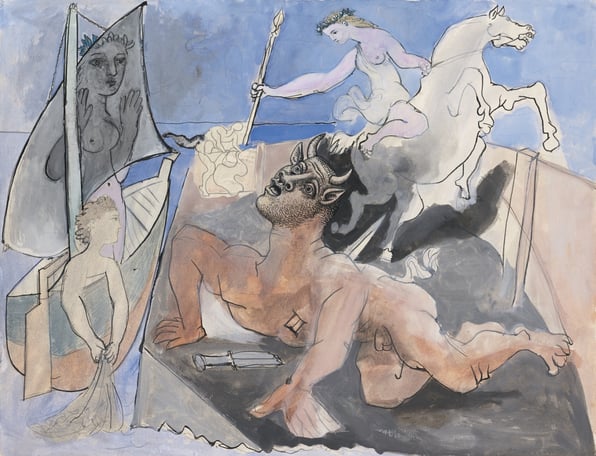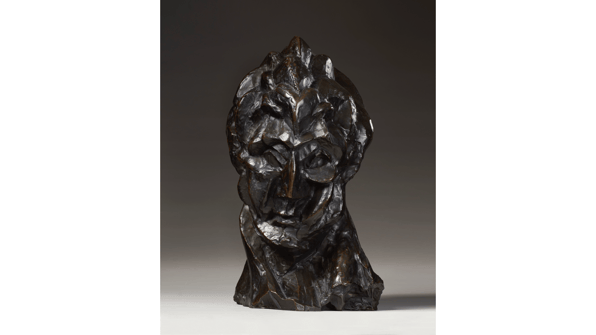So You Want to Collect Picasso Drawings?
A guide for the beginning collector who might be more than a little perplexed
It’s hard not to feel overwhelmed walking out of Acquavella gallery’s career-spanning show of Picasso’s drawings. It’s also hard not to feel inspired and even covetous of the work and it’s immediacy. Although none of the drawings in the show are for sale, that doesn’t mean there isn’t a path from Acquavella to acquiring a drawing by Picasso of your own.
We spoke to Acquavella director Michael Findlay to get some advice on how to get started. The first thing to understand is that there is a huge volume of work and a wide range of it, not just because of Picasso’s unparalleled skill but also because he drew all of the time on just about everything. “His output of works on paper was prodigious,” Findlay says, “and while the novice collector might be thrilled to pay a relatively modest price for a crayon face on the fly leaf of a book dashed off after or during lunch, the serious collector of modern drawings may wait years to find—and pay a very strong price for—the type of history-making Cubist collages we have in our exhibition.”
Only you can know where your budget and interests intersect. One word of caution: “While many people collect both drawings and prints,” Findlay says, “the markets are largely separate—in terms of galleries, auctions and expertise. “
Once you have a better idea of what you’re looking for, or even if you want help figuring that out, the best place to start is with a gallery. “My advice to anyone new to collecting Picasso drawings is to log on to the ADAA website,” Findlay says. “Filter member galleries by ‘modern’ and ‘drawings.’ A number of galleries will pop up—including Acquavella.”
Findlay suggests you take the time to look at what is on offer at the galleries first hand. That means going to the gallery or visiting them on the stand at an art fair. While you’re looking at the drawings, chat with a dealer or two. “Even with Picasso quality varies widely,” Findlay cautions, “and does not necessarily depend on date or size or subject.”
Don’t confine yourself to galleries, either. Findlay once ran the Modern and Impressionist department at Christie’s. He knows whereof he speaks when he says, “Picasso drawings are often at auction but the auction houses are rearranging their sales categories to favor marketing opportunities. So, when browsing live or online, I suggest asking to speak to a specialist with a strong background in twentieth century works on paper.”
If you’re lucky enough to find the right work at a price you’re willing to pay, there’s still a little more work left to do. “Condition is paramount when purchasing a drawing by Picasso,” Findlay says. “It does not matter if it is ink or pencil on paper, collage or even oil on corrugated cardboard. Serious drawings collectors often have prospective purchases examined by conservators they trust. It is well worth investing in this type of advice.”
Don’t get too carried away in the search for perfect condition, Findlay says. “The objective is not to find perfect condition but condition that is consistent with the medium and date. You also want to know that the work has not been compromised in a way that might not be immediately detectable.”
Finally, let’s circle back to the original question. What should you look to buy as an entry point? “Beginner collectors are often sidetracked by what they feel is the need to buy a “typical” Picasso drawing,” Findlay says from his experience. As the Acquavella drawings show demonstrates, there’s really very little that could be considered typical for such a Protean artist.
In this fact, Findlay says, the beginning collector should feel liberated rather than perplexed. “Picasso’s genius was such that either all or none of his graphic work is “typical” and that for seven decades his hand showed a mastery equal to none.”
